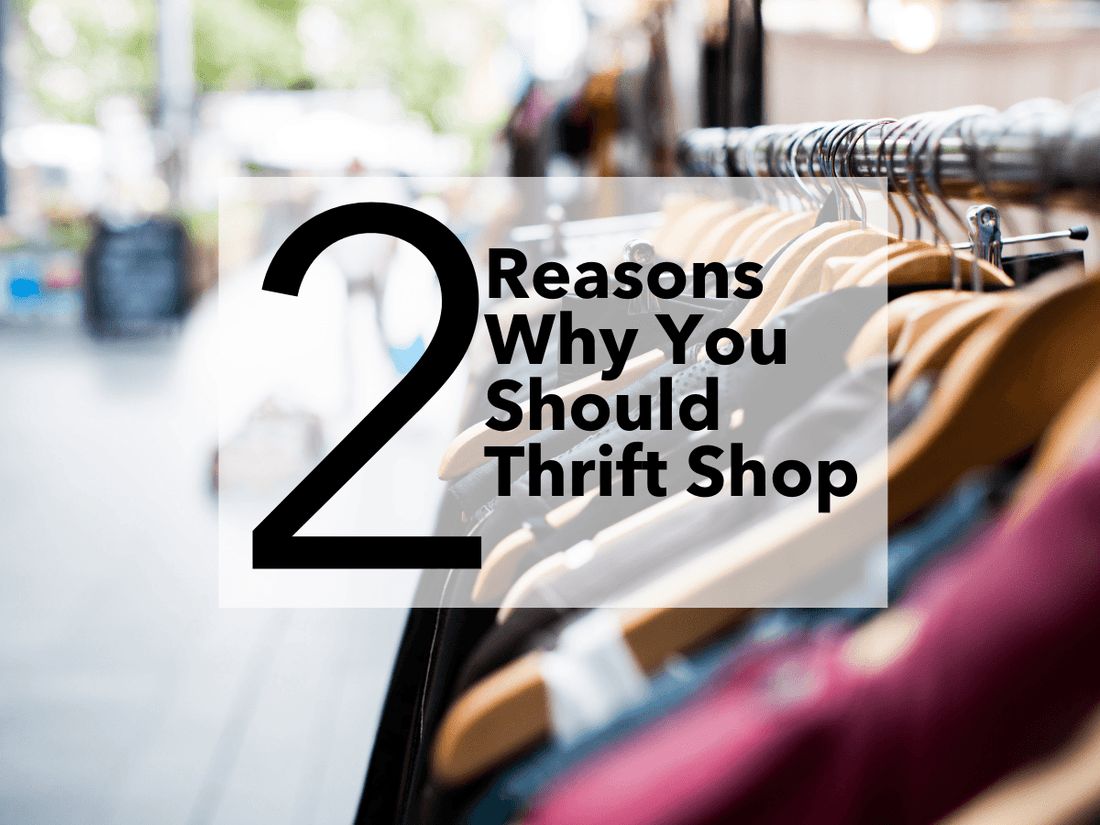2 Reasons Why You Should Thrift Shop

Author Writer: Peter Vivonetto
It’s no secret that there’s been a recent cultural shift in preference of where people shop for clothes. Slowly dying are the giant shopping malls of days past, with their walkways and food courts once packed with bustling families, now fading into history as online-shopping and ecommerce explode through the slowly resolving pandemic. But to consider the internet the only viable source of new clothing options would be misguided.
Have you ever heard of Fast fashion?
It’s a term, described by Investopedia as “low-priced but stylish clothing that moves quickly from design to retail stores to meet trends, with new collections being introduced continuously.” With the industrialization of fashion in the 20th century, as clothes became cheaper, they also became more disposable; as prices decreased, consumption rates soared, and clothing manufacturers responded by meeting the newly increased demand. This framework is what has led to the consumption-heavy, fashion industry in place today, dubbed, “fast fashion.”
Growing alongside America’s economy of the 1900’s, were the nation’s waste management systems that would help improve sanitation and reduce the growing amounts of waste in areas with limited space, like big cities.
Thanks to organizations such as the Salvation Army, second-hand stores became increasingly common amongst working-class individuals and families. As time has progressed “thrift stores,” have maintained a consistent role in American fashion-culture (Berkely Economic Review).
Yet in recent years, young adults (predominantly Gen Z), for numerous reasons have filled their wardrobes with second-hand apparel, breathing new life into thrift stores across the country. According to this Fortune article from 2021, “The secondhand clothing business is expected to see sales double from $36 billion to $77 billion by 2025,” citing a report from ThredUp and Global Data. The article also points out that, “the number of first-time buyers of secondhand clothes jumped by 33 million,” in 2020.
So, why so much new interest in old clothes?
Here's why you should thrift.
It’s fashionable and cheap!
With mainstream brands constantly releasing new styles and introducing new trends it can be daunting to stay trendy and fashionable, especially when combined with the financial burden and societal pressures of social media.
However, aspects of the internet have actually helped to increase awareness of thrift stores, causing online communities to form around discovering unique or vintage articles of clothing and creating outfits that are self-expressive combinations of old and new trends; all while maintaining a tight budget.
For influencers across social media, it is common to upload posts about large hauls of second-hand clothing obtained from various trips to thrift stores, to platforms like Instagram and YouTube; but apps such as Depop do more than share content with the community.
Acquired by Etsy in 2021 for $1.6 billion, Depop is an online shopping platform for second-hand apparel that also functions as a social media site. User profile pages function kind of like a digital store, think eBay, where clothing items can be bought and sold to other users. In this article from NPR, 21-year-old Eve Perez states that since thrifting has become more normalized in youth-culture, she can earn approximately $1000 a month by selling second-hand clothes on Depop!
Thrifting is also very ethical and sustainable!
The last decade has shown how unsafe working conditions, and the unethical pay and treatment of employees fuel companies only concerned about profit. Public controversies like the 2013 collapse of Rana Plaza in Dhaka, Bangladesh, have sparked debate over a need for reform in the industry, in addition to encouraging companies to be transparent about their operations.
As younger generations become increasingly concerned over planet’s sustainability, the fashion industry faces growing scrutiny regarding how companies manufacture clothing. Popular brands today are ones that don’t turn a blind eye to consumer demands of corporate social responsibility, however the prices of these ethical/sustainable brands greatly exceed the prices of their fast-fashion competitors.
Which is why thrifting is such an appealing alternative to environmentally and ethically conscious consumers who don’t want to spend so much money on those premium brands (Berkely Economic Review).
Overall, the increased interest in thrift stores and second-hand apparel seems to be an optimistic shift in consumer attitude. I think it indicates that we are all becoming increasingly more aware of the goods we chose to spend our money on, how they got to be ours, and where they will go when we’re done with them. It’s like “consumer object-permanence,” (yes, I just coined that term).
Consumers are more aware now than ever that products do come and go from somewhere, they don’t only exist when we own them, and they can, in fact, belong to someone else when we no longer want them. It has not only become acceptable to shop for clothes (and more) at thrift stores; it’s encouraged from a stylistic and sustainable standpoint! Which is exactly why you should thrift.
References:
- https://www.investopedia.com/terms/f/fast-fashion.asp
- https://econreview.berkeley.edu/rise-of-thrifting-solution-to-fast-fashion-or-stealing-from-the-poor/
- https://fortune.com/2021/07/07/secondhand-clothing-boom-time-thredup/#:~:text=The%20secondhand%20clothing%20business%20is,on%20the%20rise%20as%20well
- https://www.npr.org/2021/06/18/1006207991/when-second-hand-becomes-vintage-gen-z-has-made-thrifting-a-big-business
- https://growensemble.com/rana-plaza/

